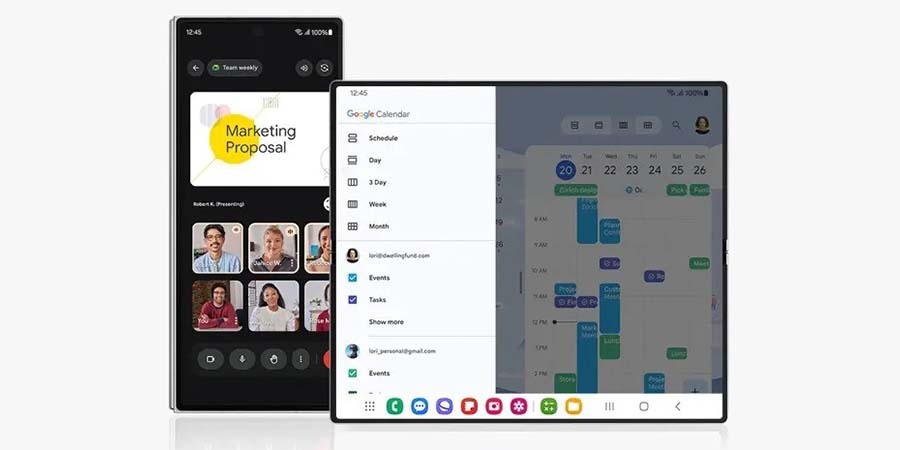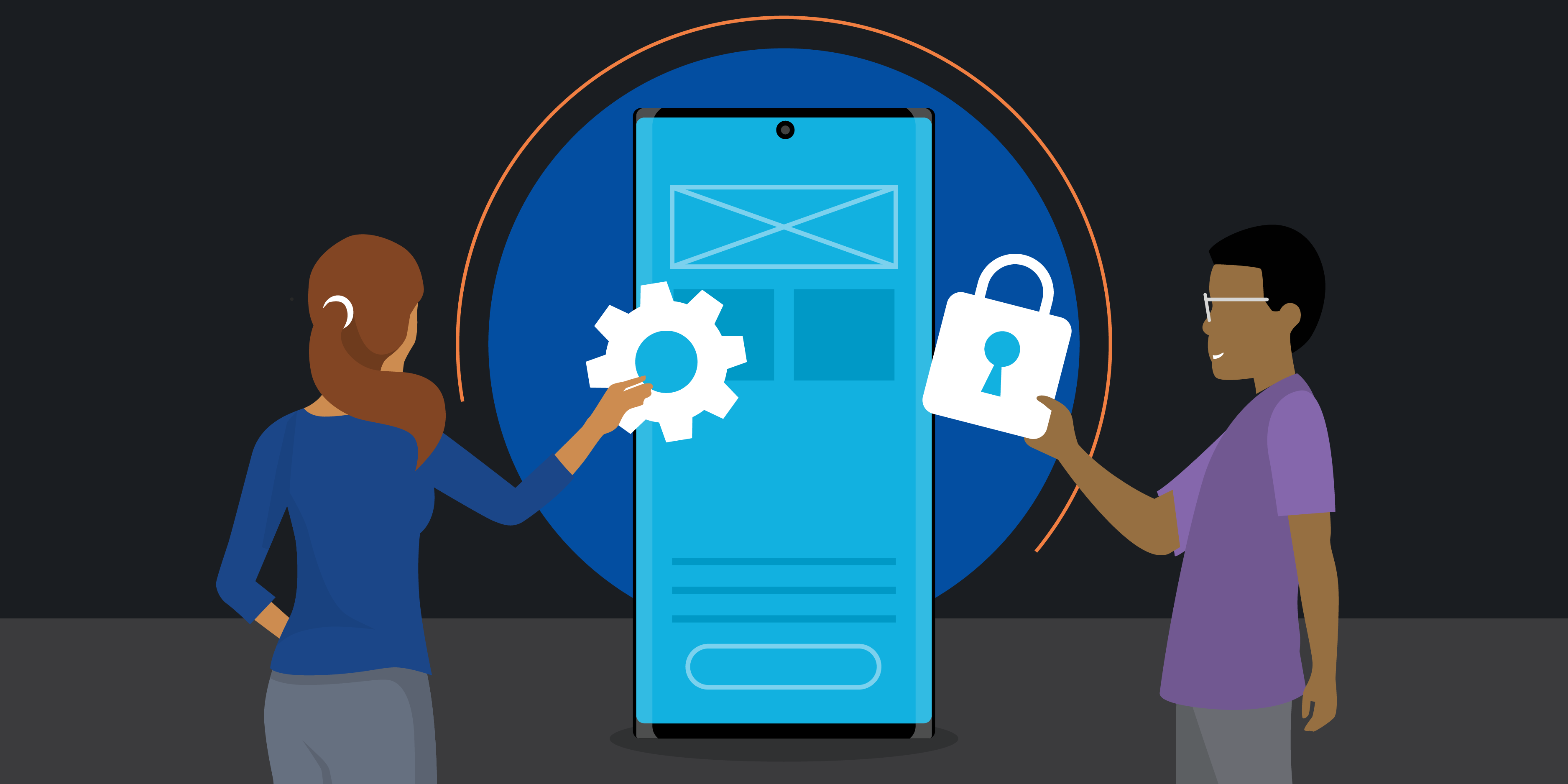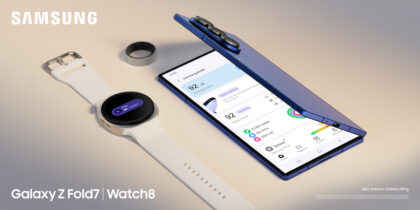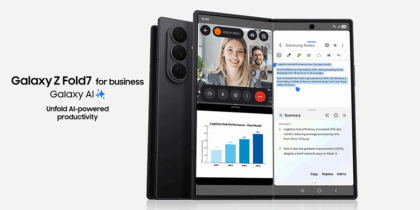You’re likely already familiar with popular Google tools like Gmail, Google Meet and Google Drive. Your team might even already be using them for communication and collaboration. While the free versions of these apps offer great functionality, Google Workspace takes it to the next level for your business.
So, what is Google Workspace?
It’s a complete suite of cloud-based productivity and collaboration tools that brings together everything you need to get work done efficiently, including Gmail, Google Docs, Google Meet and more. Google Workspace provides enhanced security, streamlined collaboration, and advanced business features, enabling your teams to work faster, smarter, and more efficiently.
Why should your small business upgrade?
Google Workspace empowers your organization with greater control and capabilities to secure data, collaborate seamlessly and leverage powerful tools. It supports digital transformation and enables flexible work arrangements, which is essential in today’s dynamic business environment.
Here are 10 reasons to consider making the switch:
1. Beyond basic email: @yourcompany.com
With Google Workspace, you get the Gmail you know and love designed for business, with admin controls and no ads. It’s also branded with your organization’s domain name, which helps build customer trust by giving everyone in the company a professional email address at your domain.
For employees, it’s the same user experience they’re already accustomed to from consumer Gmail, so they can easily switch back and forth between their personal and work accounts. For employers, it’s a premium enterprise-grade email they can control and secure without needing to maintain an email server, and they can easily add or remove users as the business scales.
In addition, each user can have multiple accounts so that the same person can receive the same email at jane.doe@yourcompany, sales@yourcompany and info@yourcompany. This kind of consistency is a great way to build customer trust.
2. Individual and team drives: Streamlined storage and collaboration
In Google Workspace, each user has a personal Drive to store their files and notes. Additionally, teams can create Team Drives for shared documents and resources, ensuring everyone has the necessary access.
Team Drives streamline collaboration by providing automatic access to all team members. When employees leave the company, the Team Drive manager can easily revoke their access, maintaining data security.
Storage options
Google Workspace offers varying storage options across its different plans. Business Starter provides 30GB of storage per user, suitable for businesses with basic storage needs. For those requiring more space, Business Standard offers a generous 2TB per user, while Business Plus provides an even larger 5TB per user, accommodating organizations with extensive storage requirements.
3. Collaborate in real time
Collaboration can be challenging, even when everyone is in the office. But with workers increasingly divided between the office and various remote workplaces, it takes on an additional level of complication. Google Workspace makes it easy to be productive with its range of collaboration apps that are unique to the business edition or upgraded from the consumer edition.
With real-time co-editing in Google Workspace, teams can edit the same Doc, Sheet or Slide simultaneously, eliminating version control while teams are working in a remote setting or in a hybrid work environment. Changes happen instantly, so people can build on each other’s ideas and reach consensus more quickly with commenting and action items. If they still need to talk things out, team members can use shareable calendars that integrate seamlessly with Gmail, Drive, Contacts, Sites and Meet so they always know what’s next. They can also have a Google Meet video call — without time limits — or hammer out the details using Google Chat.
4. Integrate Google Workspace with CRM and other third-party apps
By integrating Google Workspace with CRM and other productivity apps, your team can work seamlessly across platforms, all from inside the Google Workspace app. Employees access work apps with a single sign-on, and they don’t waste time toggling back and forth, duplicating efforts (and data). Your company gets a productivity boost, and you don’t have to worry about data inconsistencies and human error.
For example, with CRM integration, salespeople and customer service reps can auto-log tasks, calls, meetings, and emails in Salesforce without leaving Gmail. They can also view contact and account insights from Salesforce in Google Workspace and easily pull CRM data into Google Sheets.
5. Manage it all from the Admin Console
The Google Workspace Admin Console lets you manage your data, users and apps from a single portal. Intuitive dashboards let you add and remove users and groups, customize the user experience, manage devices, create roles, assign permissions and configure security settings.
For example, you can block untrusted apps, enforce security keys or require two-step verification. If they log into Google Workspace or related apps from a new computer or mobile device, Google sends a text message with a verification code they have to enter before they can access company data. Google Workspace also comes with enhanced email scanning — checking for security threats — as well as security analytics and best practice recommendations to help protect your business.
6. Get enterprise-grade security with Endpoint Management
The Admin Console lets you control Google Workspace accounts; Endpoint Management lets you control which devices can access those accounts.
Get business app development done right
Transform your workplace with this free guide to a successful app development project. Download Now
With Google Workspace Endpoint Management, you can distribute apps on mobile devices quickly and at scale. You can also check usage, manage security settings and limit access on any endpoint device. If a device is lost or stolen, you can erase confidential data remotely by wiping the device or the account.
7. Preserve business data with Google Vault
Vault lets you preserve important data for as long as you need it, even from suspended accounts. You can set retention rules on certain Google Workspace apps to preserve user data — even from deleted documents and suspended accounts. This helps prevent data loss when employees leave the company and can help your legal team avoid potential problems.
Universal search makes it easy to find what you’re looking for in your data, and content can be exported to printable formats if needed. You can also use Vault to track user activity and see their searches, content views and exports.
8. Create websites with Google Sites
Need a website for your startup? Or perhaps you’re an established company and need a new interactive way to share information with your customers or remote teams.
With Sites, your team can work together to create engaging, high-quality websites — no programming experience necessary. They can easily pull content from Google Workspace apps and drag and drop it into grids or templates. They can also co-edit projects, add comments and manage access like they would in Docs.
9. Get AI-powered productivity and insights
Google Workspace leverages machine learning, natural language processing and other forms of AI to remove friction, automate simple tasks and equip your team with the data-based insights they need to make well-informed business decisions. For example, when employees book virtual meetings in Calendar, Google Assistant automatically finds a time and adds optimized rooms for each attendee. Smart Compose in Gmail can finish their sentences for them, while Nudge reminds them to respond to messages. Google Sheets is also integrated with BigQuery, so employees can manage, analyze and interpret large amounts of raw, real-time data with convenience. And now, with Gemini, you can take your organization even further and quickly craft messaging, evaluate large amounts of information, summarize documents or emails, and automate regular tasks with the power of generative AI. This gives marketers time to focus on higher-value strategic and creative workstreams.
Even better, businesses using the latest Samsung mobile devices like Galaxy Z Fold6 can really make the most out of Google Workspace. For example, it already offers Circle to Search with Google, a feature that makes it easy to look up any details about text and images on the screen. There’s also hands-free videoconferencing thanks to FlexMode, where you can sign into Google Meet live sharing and turn on your camera, making it an incredibly useful on-the-go productivity feature. If you happen to be on a call with customers or coworkers speaking in a language other than English, you can use Live Translate, a Galaxy AI1 feature that enables you to communicate clearly without a language barrier.
Companies that use Galaxy Z Fold6 can also get special offers to use Google Ads, which can help you discover and reach customers who are looking for the kind of products and services you offer online. This not only includes marketing on Google Search but via Gmail, YouTube and the Web.
10. Enable a consistent experience across devices
Google Workspace works on any internet browser, but Google Chrome offers the best experience. Users can set up a Google Chrome bookmark bar and synchronize Chrome across all the devices they use to access Google Workspace, so whether their employers are using a smartphone, tablet, or laptop, they can maintain access to an optimized desktop.
Discover more essential apps to empower your growing business — and explore exclusive business pricing, financing and trade-in options, and other deals on everything from phones and tablets to monitors and memory.
1Galaxy AI features by Samsung will be provided for free until the end of 2025 on supported Samsung Galaxy devices.









